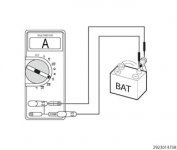JeepJeep75
New member
I have a similar issue with my 13 JKU. I don't have any dual battery set up and haven't yet tried to track down the culprit, BUT....I have noticed that inside the jeep behind the dash console somewhere something is activating intermittently. More specifically, every 4 minutes 12 seconds what sounds like some kind of motorized flap like anA/C vent damper is cycling. This is with the Jeep sitting in the garage with no key in it and not having been turned on for days. Absolutely have no idea what is being cycled on and off or why, but its occurring exactly every 4 minutes 12 seconds and if I leave the Jeep for a week or so the battery will be drained. So as weird as it may sound, sit in your jeep in silence for at least 5 minutes and see if you hear anything.
I have heard this door closing sound behind the dash in my '15 JKUR as well. I think it's just a delayed thing that occurs after your turn the key off. Have you heard it do it more than once in say, 10 minutes?

